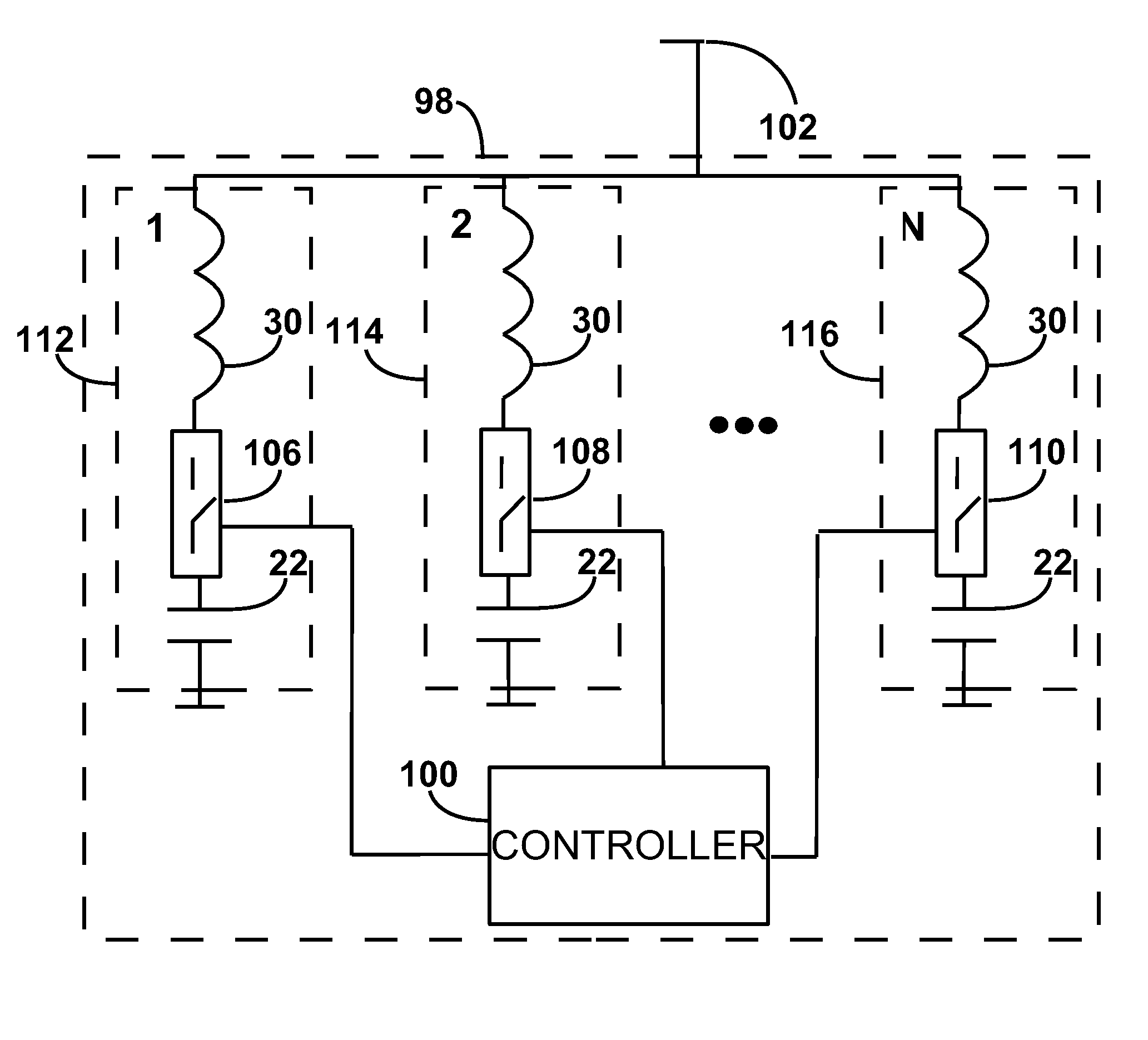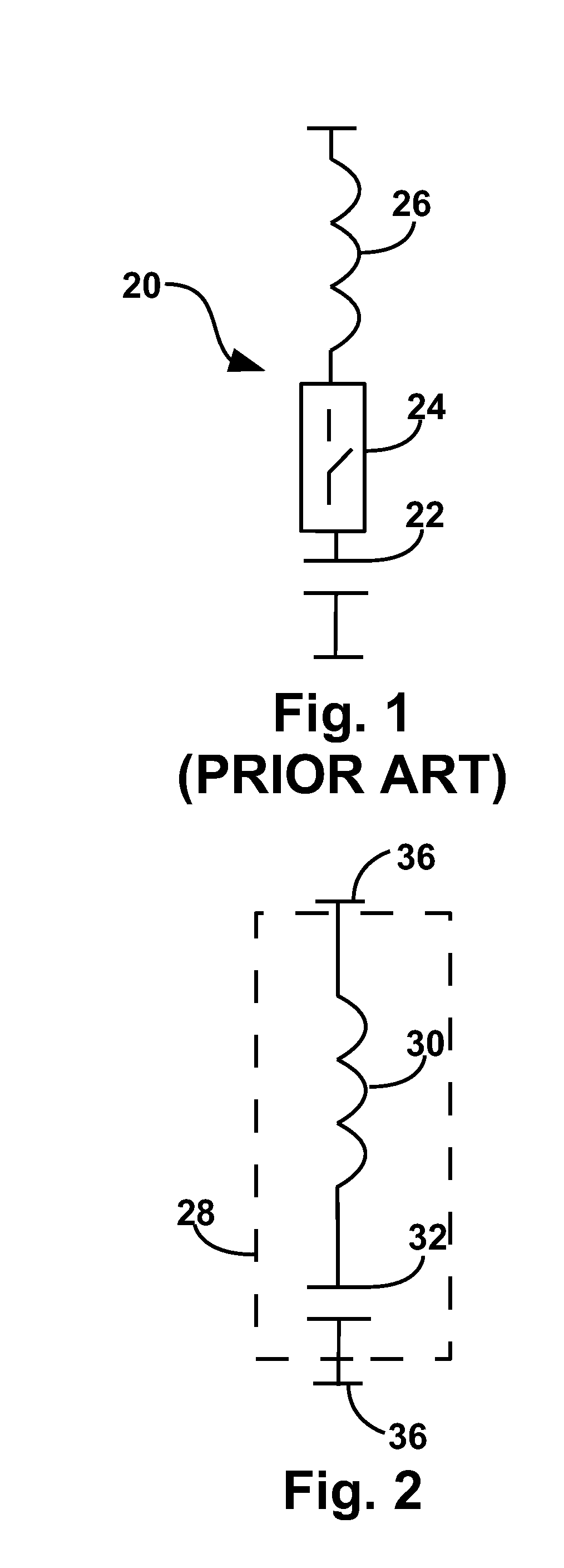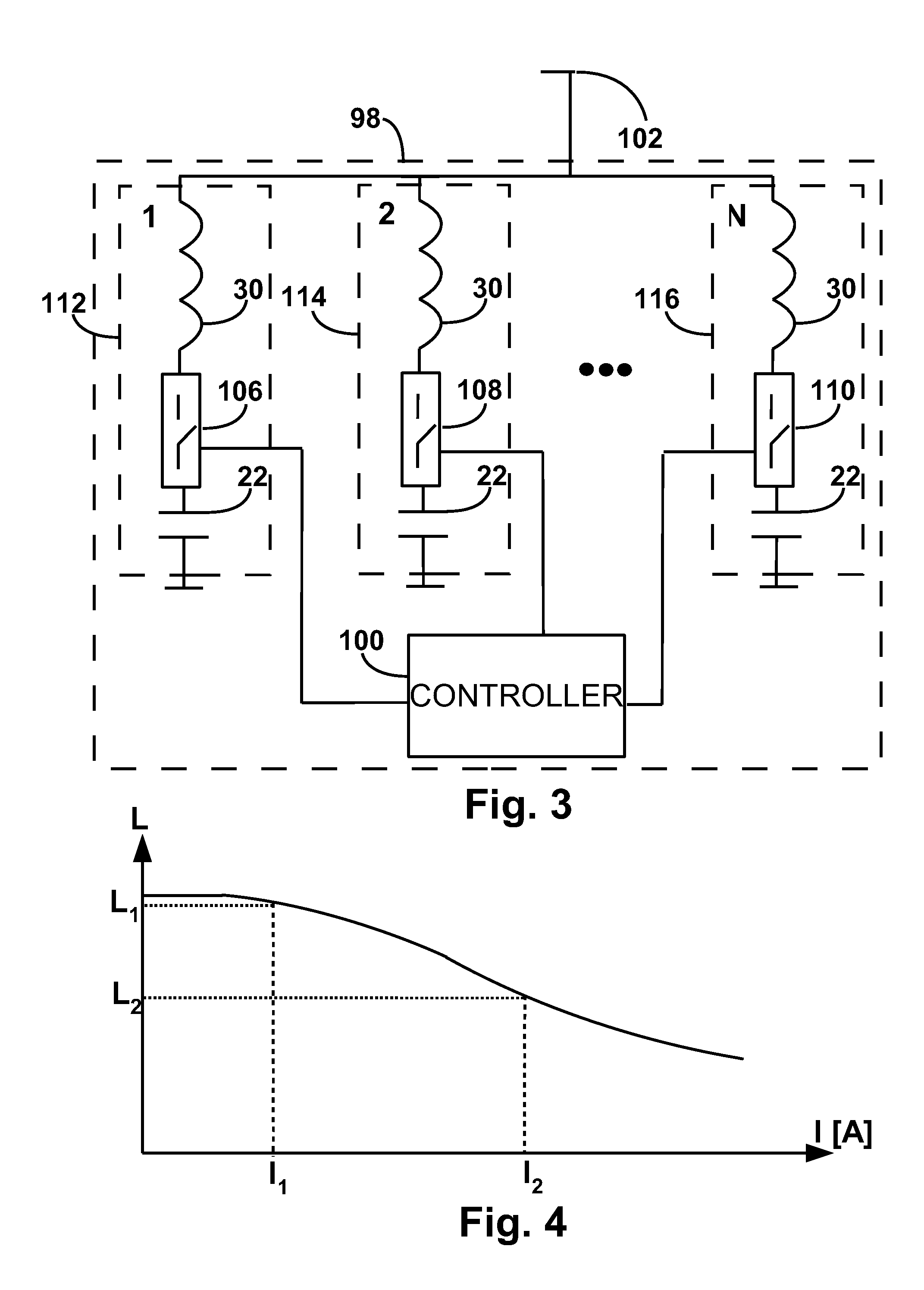Reactive power compensation circuit
a compensation circuit and reactive power technology, applied in the field of reactive power, can solve the problems of providing reactive power, affecting the operation of the circuit, etc., and achieve the effect of reducing the voltage to a level significantly lower, reducing the disadvantage, and reducing the disadvantag
- Summary
- Abstract
- Description
- Claims
- Application Information
AI Technical Summary
Problems solved by technology
Method used
Image
Examples
Embodiment Construction
[0012]In accordance with the present invention appliances for absorbing reactive power such as inductors and appliances for generating reactive power such as capacitors are associated with switching appliances and with a controlling mechanism for delivering reactive power compensation to electrical networks of either low or high voltage. A schematic description of a power compensation branch circuitry employed in accordance with the present invention is described in FIG. 2 to which reference is now made. Power compensation branch 28 includes inductor 30 and capacitor 32. A relationship between I, V and X in the branch is given by equation 1 as follows:
I=VXC-XL(1)
Where V is the voltage across branch 28, XL is the inductor reactance in the fundamental frequency and XC is the capacitor reactance in the fundamental frequency. In accordance with one embodiment of the present invention the resulting impedance of the branch in the overall is a capacitive one.
[0013]In order to better explai...
PUM
 Login to View More
Login to View More Abstract
Description
Claims
Application Information
 Login to View More
Login to View More - R&D
- Intellectual Property
- Life Sciences
- Materials
- Tech Scout
- Unparalleled Data Quality
- Higher Quality Content
- 60% Fewer Hallucinations
Browse by: Latest US Patents, China's latest patents, Technical Efficacy Thesaurus, Application Domain, Technology Topic, Popular Technical Reports.
© 2025 PatSnap. All rights reserved.Legal|Privacy policy|Modern Slavery Act Transparency Statement|Sitemap|About US| Contact US: help@patsnap.com



